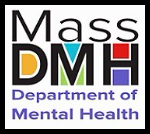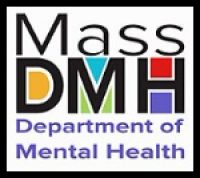
TIST Training
The training is made up of an Introduction and four Modules. Each module has a pre-recorded webinar posted on the first of the month and then a recording of the live training session with Dr. Janina Fisher, which occurs a few weeks later. The dates of each posting can be viewed on the TIST schedule page.
Scroll down to view the recordings and slide decks available to date.
Intro To TIST
| Based on theoretical principles drawn from the neuroscience research on trauma, TIST combines mindfulness-based interventions with techniques drawn from Sensorimotor Psychotherapy, ego state therapies, and Internal Family Systems to address challenges of treating clients with a wide range of diagnoses, including complex PTSD, borderline personality, bipolar disorder, addictive and eating disorders, and dissociative disorders. |
Module One:
Trauma And Self-Alienation And Foundational Skills
Surviving trauma, especially when young, requires that we disown the abused, humiliated child and try to be a child who is too ‘good’ to be abused. The effects of disowning and rejecting ourselves to survive have lifelong consequences, resulting in personality or dissociative disorders, unsafe behavior, and tumultuous relationships, including the therapeutic one. In this module, we will look at a trauma model that addresses this important issue and how to help clients understand themselves with compassion rather than shame and self-judgment.
Overcoming internal fragmentation and self-alienation require the ability to focus mindfully rather than ‘going with’ the flood of emotions and impulses survivors experience daily. Step-by-step instructions will help the therapist guide clients from impulsive actions and reactions to mindful awareness and increasing ability to be “with” themselves. Learning to relate to their intense distress as a communication from young traumatized ego states changes their relationship to the strong emotions and tendencies to act out.
| Pre-recorded Module 1 (released on 9.1.21) |
Live Recorded Webinar with Dr. Fisher (9.21.21) |
Module Two:
Suicidality, Self-Harm, Addictions And Eating Disorders
Research demonstrates the strong statistical relationship between a history of trauma and the development of unsafe behavior, addictions and eating disorders. This module focuses on how to help clients learn to relate to unsafe impulses as trauma responses driven by ego states. Trauma-related cues in daily life stimulate fear and shame, driving fight and flight parts to desperate measures that bring short-term relief but recreate the unsafe environment of childhood. Understanding their intentions as protective often calms the system and allows clients to build the resources and skills they need to manage emotional overwhelm.
| Pre-recorded Module 2 | Live Q&A Webinar – 10.19.21 |
Module Three:
The Challenge Of Traumatic Attachment
Physical, emotional and/or sexual trauma in childhood has a profound effect on attachment development, causing what researchers call ‘disorganized attachment.’ Children respond to a threatening environment with heightened yearning for closeness and fear of abandonment alternating with fears of closeness and heightened mistrust. Long after the events are over, separation anxiety alternates with pushing others away or fleeing from them. The intensity of these opposing drives is confusing and frightening and often strains the therapeutic relationship. In this module, we will address how to deal with traumatic attachment as it complicates treatment.
| Pre-recorded Module 3 | Live Q & A Webinar – 11.17.21 |
Module Four:
Developing Internal Communication And Collaboration
The next challenge in the treatment is the development of internal collaboration between split-off ego states driven by conflicting survival responses. Self-destructive behavior is usually addressed behaviorally, but high relapse rates confirm the need to also treat the trauma. Learning how to help clients change their relationship to unsafe thoughts and impulsive actions is a first step. Next, treatment requires an ability for internal dialogue and negotiation that results in increasing empathy for the traumatized child of the past and a willingness to deal with the grief and pain creatively and compassionately. Safety becomes common ground where all parts of the self can be welcomed. As bonds of kindness and compassion are built internally, intense reactivity diminishes, allowing clients to accept previously disowned parts and emotions rather than react impulsively. Instead of emphasizing ‘integration,’ this model focuses on internal collaboration, on the establishment of internal acceptance, forgiveness and safety.
| TIST Pre-recorded Module 4 | Live Q & A Webinar – 12.16.21 |

